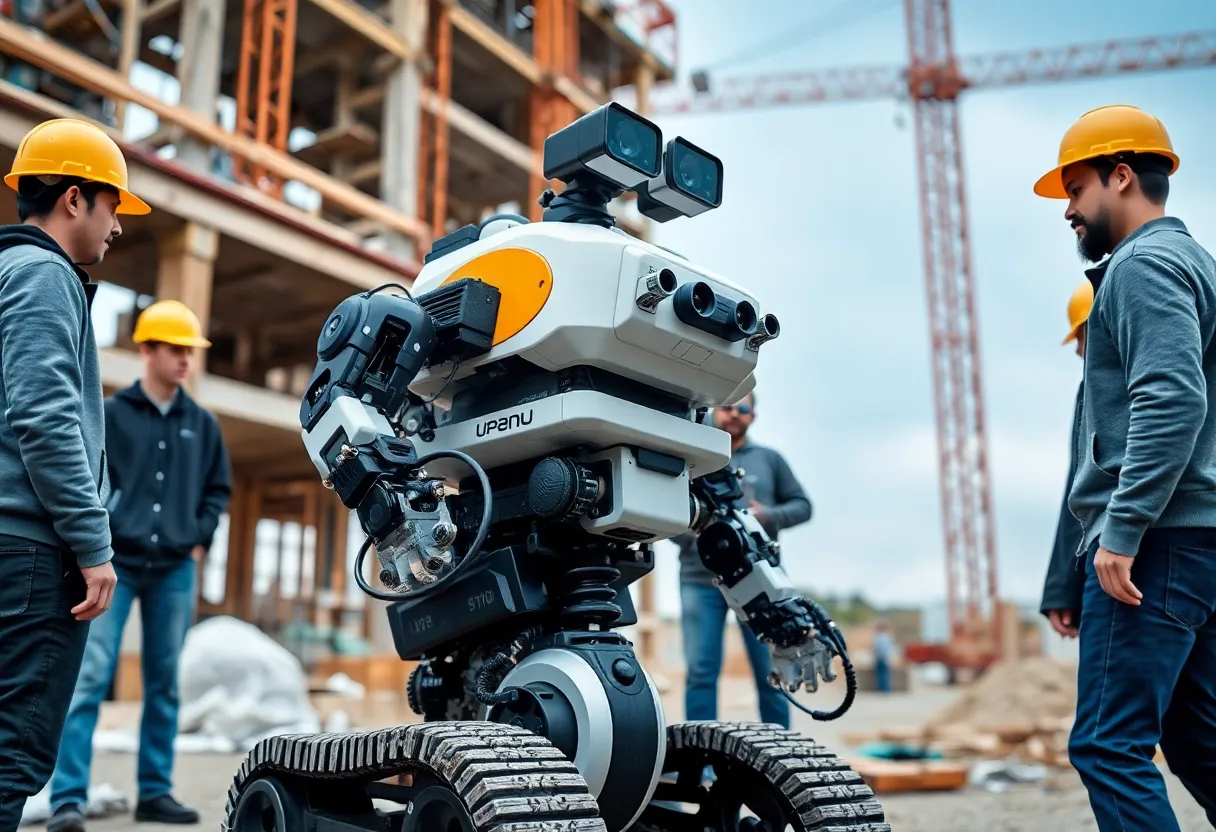News Summary At the University of Wisconsin-Madison, engineering students are testing the Unitree B2 robot to improve safety and efficiency at construction sites. This advanced robot performs tasks such as site inspections and safety monitoring through autonomous functions and the use of sensors. Collaboration with industry partners highlights a commitment to integrating technology in construction practices, while ongoing challenges in navigation present opportunities for future development. The initiative underscores the growing trend of utilizing robotics for enhanced operational management within the industry. Madison, Wisconsin — Construction Robot Test Aims to Boost Safety and Efficiency Construction safety and progress monitoring are taking a high-tech leap at the University of Wisconsin-Madison. Engineering students are testing a state-of-the-art construction robot known as the Unitree B2 at the Kellner Family Athletic Center construction site, located next to Camp Randall Stadium on the UW-Madison campus. This robot aims to improve safety protocols and streamline project oversight through autonomous functions and advanced sensors. Robotic Capabilities and Functionality The Unitree B2 is designed to perform various tasks including site inspections, progress monitoring, and safety assessments. The robot is equipped with a suite of sensors such as LiDAR and cameras, which enable it to document the construction site comprehensively. These sensors allow the robot to generate detailed visual and spatial data, assisting engineers in tracking project development and identifying potential issues. One of the robot’s significant functions is safety monitoring. It can assess whether workers are wearing appropriate Personal Protective Equipment (PPE) and check adherence to safety protocols. By performing these tasks autonomously, the robot enhances safety measures without requiring constant manual oversight, especially during off-hours when human presence on site is limited. Operational Use and Oversight Engineering students, including Ph.D. candidate Liqun Xu from the Department of Civil and Environmental Engineering, operate and test the robot. Xu has been evaluating the robot’s ability to navigate the construction environment and complete designated tasks. Early testing involves controlling the robot manually and gradually shifting towards automatic operation, simulating real-world scenarios to assess performance and reliability. The robot’s ability to work autonomously during off-hours has generated optimism among project stakeholders, as it can undertake routine or repetitive tasks outside of standard working hours. These tasks include inventory taking, project progress checks, and inspection of completed work segments, thereby reducing the workload for human workers and improving overall efficiency. Support and Collaboration The initiative has received backing from local industry leaders, with representatives from JP Cullen and Sons expressing approval of the testing process. The construction firm has offered space at the site for students to trial the robot and gather operational data. This collaboration underscores a commitment to integrating innovative technology into traditional construction practices. Current Challenges and Future Developments While early testing yields promising results, the robot faces some challenges. Navigating uneven terrain and steep slopes remains difficult, and the robot must be programmed to recognize cautionary areas marked with red tape or caution signs. These limitations currently hinder full autonomous operation but present clear targets for future improvements. Liqun Xu indicated that ongoing testing aims to refine the navigation system of the Unitree B2. Adjustments will focus on improving terrain recognition, obstacle avoidance, and the ability to identify restricted or dangerous zones, thereby enhancing safety and operational accuracy in dynamic construction environments. Background and Broader Implications The testing of high-tech robotics like the Unitree B2 at UW-Madison reflects a growing trend in the construction industry to incorporate autonomous systems for safety management and operational efficiency. As the construction sector continues to seek ways to reduce accidents, streamline workflows, and lower labor costs, robotics and sensor technology are increasingly vital components of modernization efforts. The integration of robotics into construction sites also emphasizes the importance of collaboration between educational institutions, industry partners, and technology developers. Testing projects such as this provide valuable insights into the practical application of emerging technologies and help shape future standards for construction safety and productivity. Overall, the initiative at UW-Madison demonstrates the potential for robotics to transform construction site management, promising a future where autonomous machines play a key role in creating safer and more efficient building environments. Deeper Dive: News & Info About This Topic HERE Resources Additional Resources WMTV: UW Madison Construction Robot Dog Supporting Hands-On Student Learning JSONline: University of Wisconsin-Madison Debuts New Computer Sciences Building Cowboy State Daily: Robots Herding Cattle Encyclopedia Britannica: Robot Dotnews: Long Last New Deal for Madison Park and Trades Google Search: Construction Robots
Author: STAFF HERE WASHINGTON DC
The WASHINGTON DC STAFF WRITER represents the experienced team at HEREWashingtonDC.com, your go-to source for actionable local news and information in Washington, DC, and beyond. Specializing in "news you can use," we cover essential topics like product reviews for personal and business needs, local business directories, politics, real estate trends, neighborhood insights, and regional news affecting the area—with deep expertise drawn from years of dedicated reporting and strong community input, including local press releases and business updates. We deliver top reporting on high-value events such as the National Cherry Blossom Festival, Kennedy Center Honors, and the Washington Auto Show. Our coverage extends to key organizations like the Greater Washington Board of Trade and Destination DC, plus leading businesses in government contracting and technology that power the local economy such as Lockheed Martin and Amazon. As part of the broader HERE network, we provide comprehensive, credible insights into the dynamic landscape of the Washington metropolitan area.





